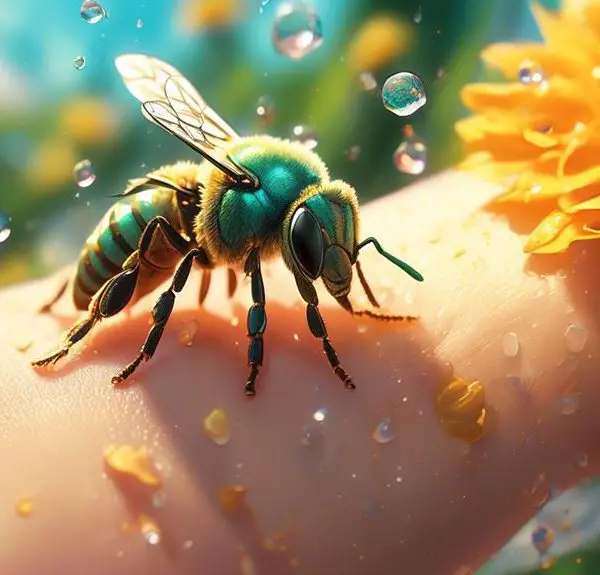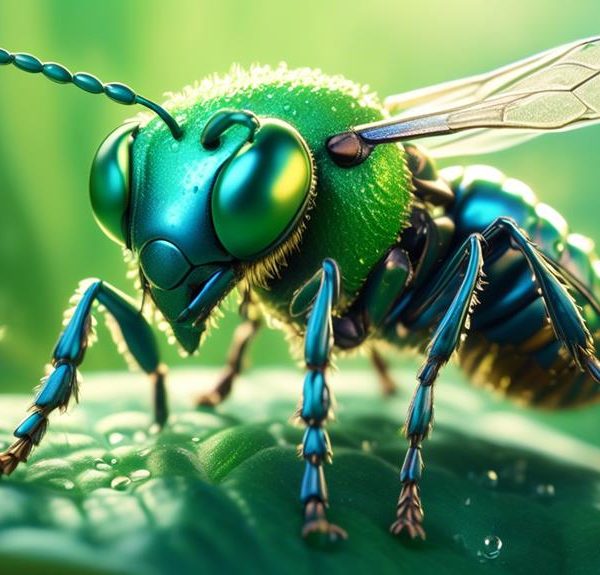Take a peek into the surprisingly potent world of sweat bees and discover what happens when their tiny sting pricks your skin.
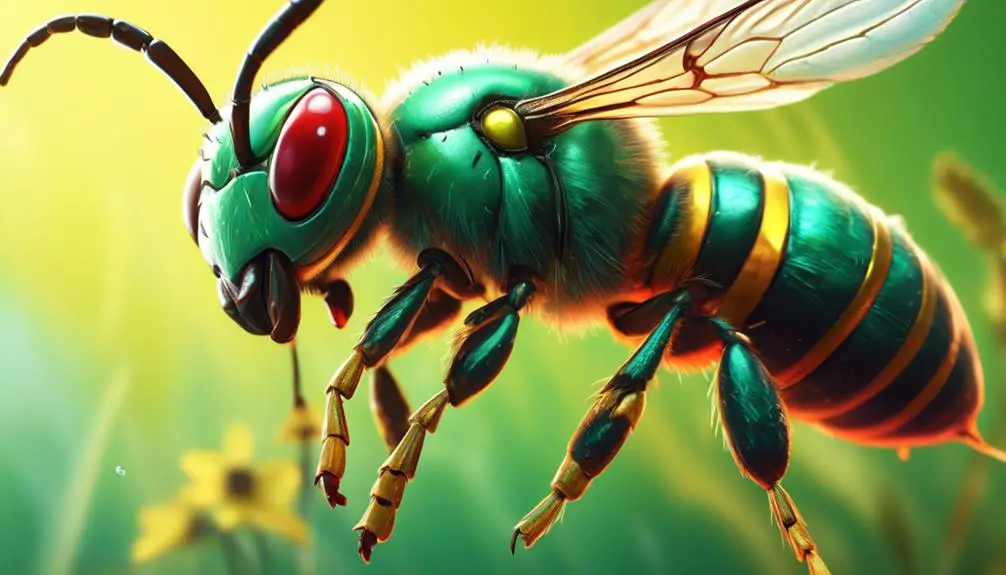
What Happens if a Sweat Bee Stings You
In the world of stings and bites, sweat bees seem more like a gentle whisper compared to a roaring shout of a hornet sting. Yet, don't be fooled by their name or diminutive stature. While you might be drawn to their metallic sheen, it's crucial to remember that these bees can, and will, sting if provoked.
But what happens when a creature so small strikes? What kind of reaction should you anticipate?
Let's embark on this journey to unravel the mystery behind the sting of a sweat bee.
Key Takeaways
- Sweat bees are attracted to human sweat because it provides salt.
- Activities like gardening, hiking, and outdoor sports increase the chances of encountering sweat bees.
- Sweat bees are not typically aggressive, but they can sting if provoked.
- Immediate reactions to a sweat bee sting include mild pain, redness, swelling, and itching, with severe reactions being rare.
Understanding Sweat Bee Behavior
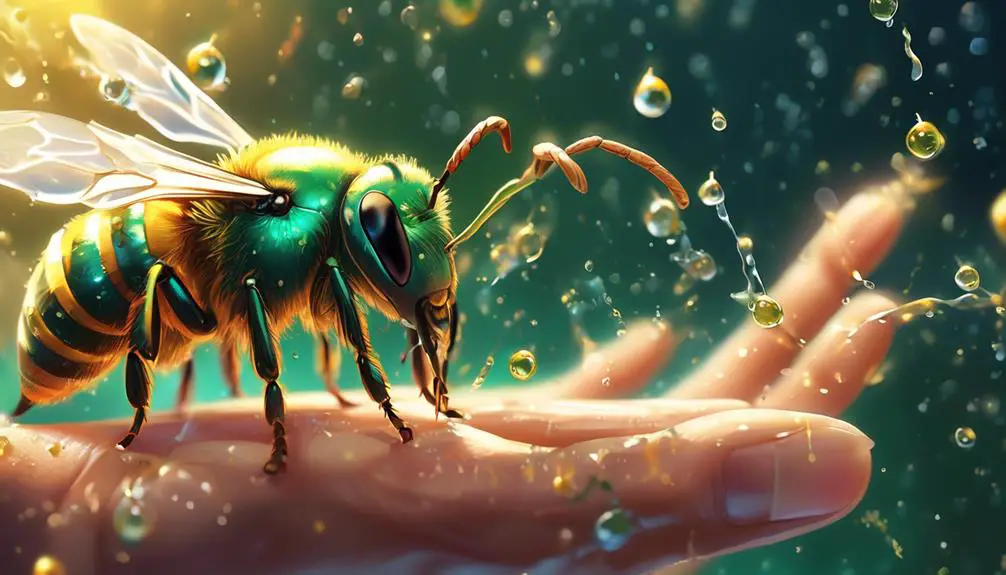
Observing sweat bee behavior can help you avoid unwanted encounters and potential stings. Unlike some other bee species, sweat bees aren't typically aggressive. They're more interested in your sweat than in causing you harm. That's right, your perspiration attracts them because it provides salt, which they need for survival.
Be mindful of your activities, particularly during warm weather when you're likely to sweat more. If you're gardening, hiking, or engaging in strenuous outdoor activities, you're more likely to come across these bees. They're also attracted to bright colors, so consider this when choosing your outdoor attire.
You should also take note of their nesting habits. Sweat bees are ground-nesters, often found in bare or disturbed soil. If you see tiny holes in the ground, it's possible there's a sweat bee nest nearby. Don't disturb the nest, as this can provoke them.
The Immediate Aftermath of a Sting
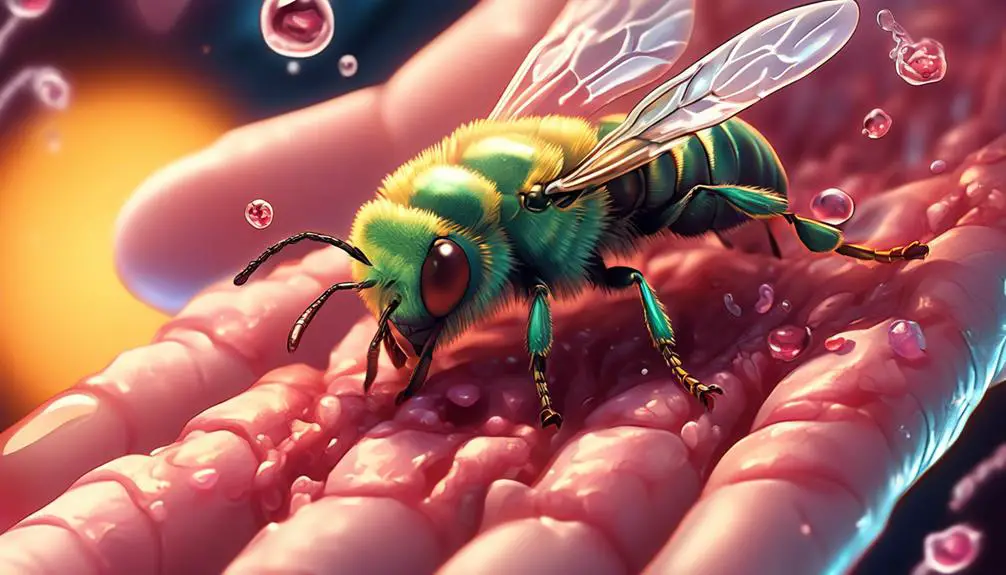
Despite your best efforts to avoid sweat bees, you might still end up with a sting, so it's important to know what happens next.
The immediate aftermath of a sweat bee's sting is typically mild, especially when compared to other stinging insects. You'll likely feel a sharp, sudden pain at the site of the sting, akin to a pinprick. This discomfort is usually followed by redness and swelling, which can last for several hours.
Unlike bees that leave their stinger behind, sweat bees don't, so you won't have to worry about removing a stinger. However, the sting site may itch or feel tender to the touch. It's crucial not to scratch, as this can worsen the inflammation and potentially lead to infection.
You might also experience a minor allergic reaction, manifesting as hives, itching, or redness around the area. Severe allergic reactions are extremely rare with sweat bee stings, but if you're experiencing difficulty breathing, a rapid pulse, or dizziness, you should seek immediate medical attention.
Now that you know what to expect, you can handle the situation with calm and confidence.
Symptoms and Reactions to Expect
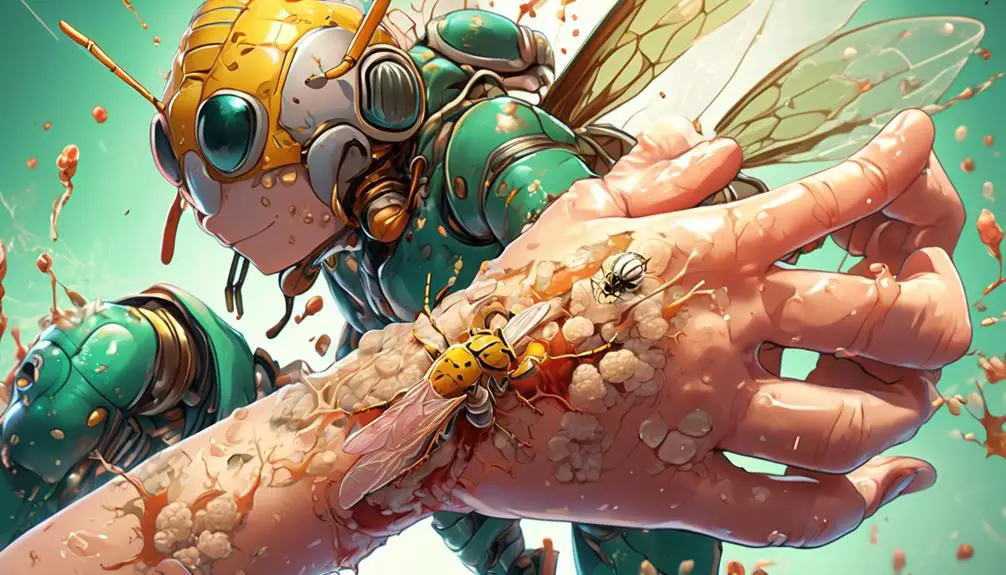
In the wake of a sweat bee sting, you'll likely notice a range of symptoms, from mild discomfort to more pronounced physical reactions. Initially, you might experience a sharp, burning pain at the sting site. This is your body's immediate response to the bee's venom.
The symptoms can be grouped into two categories:
- Mild reactions:
- Redness and swelling around the sting site
- Warmth at the sting site
- Itching and mild pain
- Severe reactions:
- Swelling spreading to larger areas
- Difficulty breathing or swallowing
- Feeling of faintness or dizziness
- Hives and severe itching all over your body
If you notice any severe symptoms, it's critical to seek immediate medical attention as you could be experiencing an allergic reaction, which can be life-threatening. Mild symptoms, on the other hand, are common and usually subside within a few hours to a couple of days.
Effective Treatment for Sweat Bee Stings
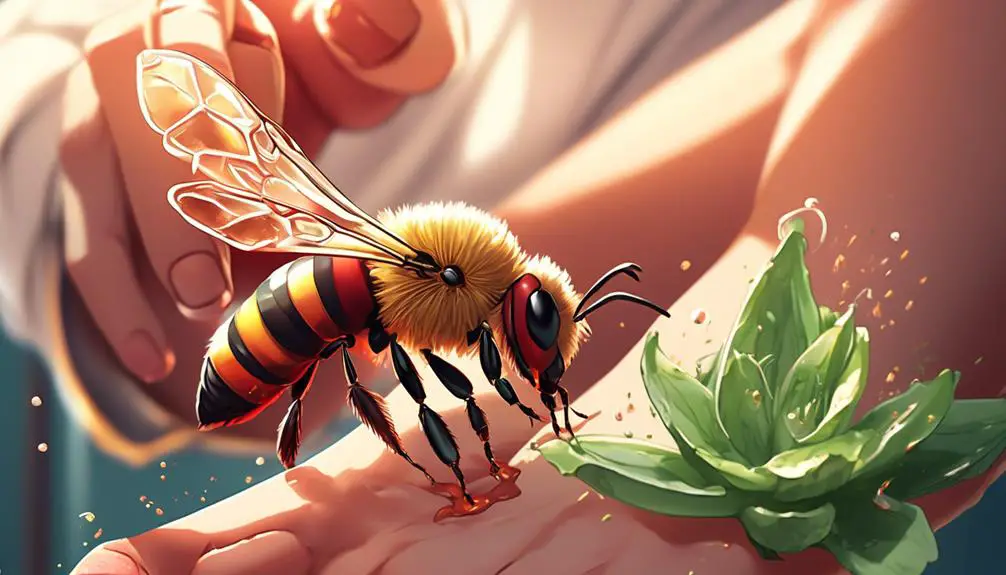
Most sweat bee sting symptoms can be treated effectively at home using simple remedies. First and foremost, you'll need to remove the stinger if it's still lodged in your skin. Do this carefully with tweezers, making sure not to squeeze the venom sac attached to the stinger.
Next, you should clean the affected area with soap and warm water to reduce the risk of infection. After cleaning, you can apply a cold compress to reduce swelling and numb the pain. A bag of frozen peas or a cloth soaked in cold water will do the trick.
Over-the-counter pain relievers and antihistamines can also help manage the discomfort and itching. Make sure you're following the instructions on the packaging.
If you notice signs of an allergic reaction, such as difficulty breathing, hives, or rapid heartbeat, seek medical attention immediately. Although rare, sweat bee stings can induce anaphylaxis in highly allergic individuals.
Prevention Strategies Against Sweat Bees

While treating a sweat bee sting is relatively straightforward, it's even better to avoid getting stung in the first place. Now, you might be wondering how to protect yourself from these pesky insects. Well, it's not as complicated as it sounds!
For starters, remember that sweat bees are attracted to human sweat. So, when you're outdoors, especially in hot and humid conditions:
- Try to stay dry as much as possible
- Use scent-free products.
Here are some more tips:
- Dress in light-colored clothing. Sweat bees are drawn to dark colors.
- Avoid flowering plants where these bees could be foraging.
- Consider professional pest control if you spot a sweat bee nest near your home.
Also, keep in mind that:
- Sweat bees are beneficial insects that pollinate plants.
- They're not naturally aggressive, but they'll defend themselves if threatened.
So, remember:
- Be mindful but not fearful.
- Respect their space, and they'll respect yours.
Conclusion
So, if a sweat bee stings you, don't panic. You'll likely experience a bit of pain, itchiness, and swelling. Treat it with ice, over-the-counter medicine, and keep it clean to prevent infection. However, get medical attention if you have severe reactions.
Don't forget, the best way to avoid a sting is to keep sweat bees away in the first place. Use repellents, wear light-colored clothing, and avoid their favorite hangouts.
Be smart and stay safe!

